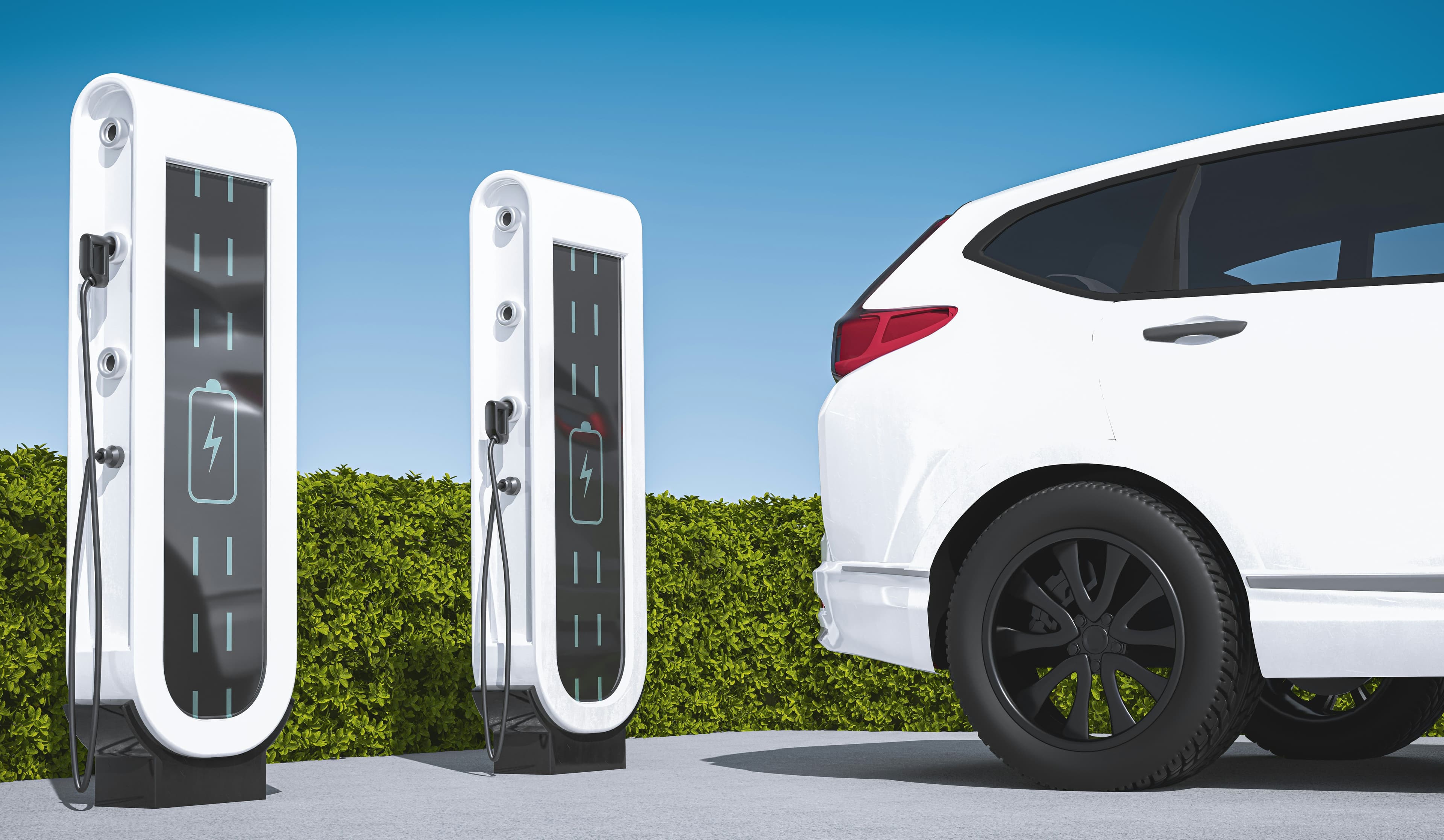Digital report: Cloudy with a chance of hidden emissions
The carbon forecast of AWS, Azure and GCP
Foreword/Context
Representing between 3 and 4% of global greenhouse gas (GHG) emissions in 2020 [1], the digital sector shows no signs of slowing down its energy and resource consumption. Alphabet (Google) and Microsoft, two of the five largest companies of the sector, have recently caused a stir in the news by reporting significant increases in their carbon footprints for the 2023 financial year (+13 and 20%, respectively [2][3]); despite stated ambitions of being ‘net zero’ or ‘carbon-negative’ by 2030.
All three bricks of the global IT system (devices, networks, and data centers) follow a similar trend. The number of devices being manufactured is increasing each year [4], and despite efficiency gains, the sheer growth of data traffic has caused the electricity consumption of networks to increase in recent years [5].
Data centers, crucial for data storage and computing, now consume around 2% of the entire world’s electricity – roughly as much as countries such as France or Germany – with consumption doubling between 2015 and 2022 and expected to double yet again by 2026 [6] with the continued rise of energy-intensive technologies such as artificial intelligence (AI) and blockchain.
Cloud providers, such as Amazon Web Services (AWS), Microsoft Azure and Google Cloud Platform (GCP), have continued growing and taking over ‘traditional data centers’ since our last article on the topic. Their sheer size and influence should make them key players in the digital sector’s decarbonization. How has their climate strategy evolved in the past two years?
With climate reporting regulations multiplying worldwide, reporting the GHG emissions of cloud services has become a key feature for companies. Do hyperscalers provide enough information to help their customers assess the emissions linked with their use of the cloud? This article aims at helping companies see through the hyperscalers’ claims and be fairly critical of their cloud carbon calculators.
Introduction
Companies’ computing and storage needs increasingly rely on cloud services. In 2023, approximately 75% of IT workloads were on-cloud [7], and that number is expected to grow to 90% in the next three years. Cloud storage solutions are also hosting more and more data as time goes by, as they provide scalable options for IT decision-makers. A recent survey led by Boavizta [8] confirms these trends: a large majority of surveyed companies, no matter their size, predict an exponential increase of their public cloud usages of over 10% per year.
The cloud market is still dominated by large-scale cloud providers (commonly referred to as Hyperscalers), such as the ‘Big Three’ – Amazon’s AWS, Microsoft’s Azure, and Google’s GCP.
In 2022, Carbone 4 analyzed the climate strategies and communication of these three providers. The article concluded on the lack of maturity of hyperscalers’ corporate claims and highlighted the shortcomings of the carbon calculating tools provided to customers. These tools were not even transparent enough to allow said customers to comply to the legislation to date, even less to anticipate the European Corporate Sustainability Reporting Directive (CSRD).
With an ever-growing size, have hyperscalers raised their standards on climate action, or is the forecast still cloudy?
‘Net Zero’ or ‘carbon neutral’ companies, still and always – despite poor results on emissions reduction
The main cloud providers’ carbon neutrality claims have not matured much over the years: Amazon still wishes to reach ‘net-zero across its operations by 2040’, Microsoft are still committed to being ‘carbon negative by 2030’ ; despite the absence of a clear scientific definition for ‘carbon neutral’ company [9] and the misleading nature of this terminology. Google has dropped its ‘carbon neutral since 2007’ claim in favor of a ‘net-zero by 2030’ objective. Other large-scale cloud providers such as Oracle and Alibaba Cloud aim for “carbon neutrality” by 2025 and 2030, respectively.
These neutrality claims are perceived more and more negatively by their own customers: the aforementioned Boavizta study highlighted that 88% of surveyed AWS, Azure and GCP users either consider the objective of a ‘carbon-neutral cloud’ as illusory or not transparent enough.
The Net Zero Initiative lays out the three ways by which a company can contribute to global carbon neutrality: reducing its own emissions, helping others reduce their emissions, and increasing carbon sinks. With carbon sinks potential capacity being limited [10], and IT companies’ decarbonizing effect yet to be proven [11], the first and foremost priority of hyperscalers should be the effective reduction of their own emissions.
However, none of the three largest cloud providers have yet recorded significant reductions in their induced emissions (except in 2020, where reductions can be considered as strongly conjunctural with the Covid-19 pandemic). In 2022, Amazon and Microsoft have reported reductions of 0,7% and 0,5% respectively, roughly 10 times less than the required 5-7% yearly reductions to meet the Paris Agreement objectives, while Google’s emissions slightly grew. In 2023, while Amazon saw a sharper decrease (3%), Google and Microsoft reported large increases (13% and 20% respectively), driven by investments in hardware and infrastructures linked to the AI boom.
To make matters worse, when looking at the Big Three’s carbon footprints using the location-based method for energy consumption, all have increased in 2023, sometimes spectacularly: +2% for Amazon, +12% for Google and +22% for Microsoft[12].
Reductions reported in the past years are almost exclusively attributable to Scope 2 reductions, which comes as no surprise. Indeed, as highlighted previously [13], the hyperscalers’ main strategy to reduce emissions over the past years was through the purchase of electricity labeled as ‘renewable’, thanks to contracts such as power purchase agreements (PPAs) or unbundled guarantee of origin (GO) certificates. It is to be noted that hyperscalers also lack transparency on the nature of these ‘green electricity’ contracts, not disclosing the proportion of electricity coming each type of contractual instrument, although this information is required by the CSRD.
Reporting Scope 2 emissions using the market-based accountability method allows the hyperscalers to associate zero Scope 2 emissions to every kilowatt-hour (kWh) of electricity purchased through PPAs or GOs.
This raises several issues:
- PPAs and GOs do not guarantee spatial and temporal consistency between the purchased ‘green’ electricity and the electricity consumed by the customer [14]. While these mechanisms can, with the right context [15], promote the development of new renewable energy facilities, the electricity physically consumed by the hyperscalers’ datacenters still relies on all other production facilities of the local electricity grid. Accounting for GHG emissions linked to electricity consumption as zero in a country such as Ireland where the average carbon intensity of electricity is nearly 400 gCO2e/kWh [16] is highly misleading.
- Increasing electricity consumption and solely relying on the electricity’s decarbonation may lead way to competitions of use: there is no guarantee that there will be enough low-carbon electricity for all sectors, as the IPCC states that global climate objectives cannot be reached without sufficiency efforts.
- Some countries such as France already impose accounting for emissions using the location-based method in its regulation. The Corporate Sustainability Reporting Directive (CSRD) [18] adds an obligation for all companies reporting in the EU to report using the location-based method. More globally, compliance with the GHG Protocol requires to report using the location-based method as well if a market-based value for Scope 2 emissions is given.
Even overlooking the debatable nature of these Scope 2 reductions claimed by the largest cloud providers thanks to market-based accountability, another problem arises: this reduction lever is nearing the end of its road. Scope 2 emissions now only represent a few percents of the hyperscalers’ total reported carbon footprints.
With roughly 100% of electricity consumption covered by ‘green’ electricity purchases, Scope 2 emissions are no longer compressible (as they are close to zero) and can no longer carry the entire decarbonization strategy of the hyperscalers, as highlighted by the figure below.
Out of the Big Three, only Google still has room for Scope 2 reductions, as they have rightfully opted for a more precise accountability method: counting electricity consumption emissions as zero only when the purchased green electricity satisfies spatial and hourly temporal coherence[19].
To reach their decarbonation objectives, hyperscalers must focus on another lever than green electricity purchases, as their physical impact on emissions reduction is questionable and their limits are already showing. Sufficiency efforts (such as questioning the necessity of the industry to invest so heavily in AI technology for instance), while long overlooked, should be integrated in the hyperscalers’ strategies if they really wish to get closer to their emissions reductions objectives.
Beyond figuring out their own decarbonation, Cloud providers have another duty: providing precise tools for their customers to be able to report emissions linked to their purchase of cloud services. Current changes in regulations are going in this direction. In Europe, for example, the CSRD requires reporting companies to specifically communicate the carbon footprint of their cloud service purchases (as a subset of their total purchased goods & services footprint) if they are significant.
So, what is the current level of detail provided by the hyperscalers’ ‘carbon calculators’? Is it precise enough to help companies in their mandatory CSRD reporting?
Carbon calculators have slightly improved
Similarly to any purchased service, Cloud spendings rely on physical flows that emit greenhouse gases and must be included in the carbon footprint calculation of any company reporting on its emissions.
The figure below shows the main emission sources of Cloud services and how to account for them, highlighting which category of the GHG Protocol it falls under depending on the point of view of the reporting company:
The largest cloud providers all provide carbon calculators to allow their customers to estimate their emissions linked to cloud service use. In 2022, Carbone 4 highlighted the flaws of these tools: lack of transparency on the methodology used to compute emissions and indicators, and insufficient perimeter coverage. Two years later, the overall quality of these calculators has slightly improved:
Nonetheless, most of these tools remain strongly lacking overall, often providing only market-based emissions for electricity consumption and excluding important emission sources.
Notably, Azure and AWS’s omission of upstream of energy (emissions linked to the construction and maintenance of electricity production facilities, transportation of electricity, etc.) coupled with market-based accountability practicallyerase all emissions linked to electricity consumption.
By also omitting IT equipment manufacturing (and all Scope 3 items for that matter), AWS and Oracle’s carbon calculators give near-zero emissions as a result, creating an illusion of an impact-free service. This makes it very difficult for the customer to comply with the CSRD reporting, le grasp an idea of the dependency of their cloud usage on carbon emissions.
Finally, AWS and Azure put forward avoided emissions indicators built upon these very low results, and under the assumption that customers would have hosted their activities on less efficient, on-premises architectures and with ‘regular’ electricity had it not been for their service. These misleading indicators ignore the WBSCD and NZI’s good practices regarding avoided emissions claims transparency and credibility. They also ignore the sectoral best practices described in the Net Zero Initiative’s guidance on avoided emissions for IT solutions. For instance, whilst cloud services may, for a constant level of IT activity, present efficiency gains compared to on-premises equivalents, they can also be responsible for rebound effects, which are not considered in these indicators.
On the flipside, GCP still provides live location-based emission factors for electricity consumption and now includes important items such as server manufacturing.
OVHcloud’s calculator covers a wide perimeter and is very transparent on the methodology used to compute emissions, re-allocating nearly every item of their own carbon footprint to their customers and allowing them to understand their carbon dependencies.
In parallel, some initiatives from nonprofit organizations are emerging in order to estimate the energy consumption necessary for certain cloud services when it is not made clear by the providers, such as Boavizta’s Cloud Scanner tool for AWS.
If you would like to keep informed on Carbone's 4 work on this topic :
Reduction tips remain timorous regarding sufficiency
AWS, Azure and GCP provide frameworks with best practices for a sustainable usage of their services. The underlying tips mostly concern efficiency – the amount of energy that will be required for a given service: use the appropriate services to answer a given need, set data retention policies, optimize software and architecture to run workloads, etc.
Concerning the carbon intensity of consumed electricity, GCP insists on the importance of choosing regions with low location-based electricity emission factors and puts forward mechanisms such as wind and sun-based workload scheduling.
One reduction lever is absent, however: sufficiency. While there are plenty of guidelines on how to answer a given need with the most efficient architecture, none mention the necessity to question needs in the first place. The diagnosis remains: hyperscalers are not on track for the 5 to 7% yearly reductions in emissions implied by the Paris agreement and aren’t likely to get on track without rethinking business models with incentives to sufficiency.
Conclusion
With well-optimized buildings and mutualized machines, Cloud datacenters can be a relevant tool to reduce the emissions linked to organizations’ IT activity as long as rebound effects are contained. From a cloud customer’s perspective, the main elements to keep in mind when undergoing a cloud migration or aiming at reducing emissions linked to cloud usage are highlighted in the Net Zero Initiative’s guidance on the IT sector:
- Choosing a region with reliable access to low-carbon electricity – in other words, with a low location-based emission factor for electricity – to host activities,
- Questioning needs, limiting the growth of IT activity (data storage volumes, CPU usage, expected latency, etc.) – prioritizing setting reduction targets in absolute rather than in intensity may help.
From the provider’s perspective, Amazon and Microsoft must drastically improve the quality of their carbon calculator tools to allow customers to better manage their emissions and comply with the CSRD reporting, and all hyperscalers must give way to more sustainable, less rebound-prone business models.
Customers of Cloud services can play a role as well, by contacting their providers and asking for more transparency and detail on the emissions linked to their purchases. In the meantime, when the covered perimeter of carbon calculators is insufficient, emissions must be re-estimated with hypotheses to be more representative of the actual carbon dependencies at stake.
Contact us
Contact us about any question you have about Carbone 4, or for a request for specific assistance.






































































